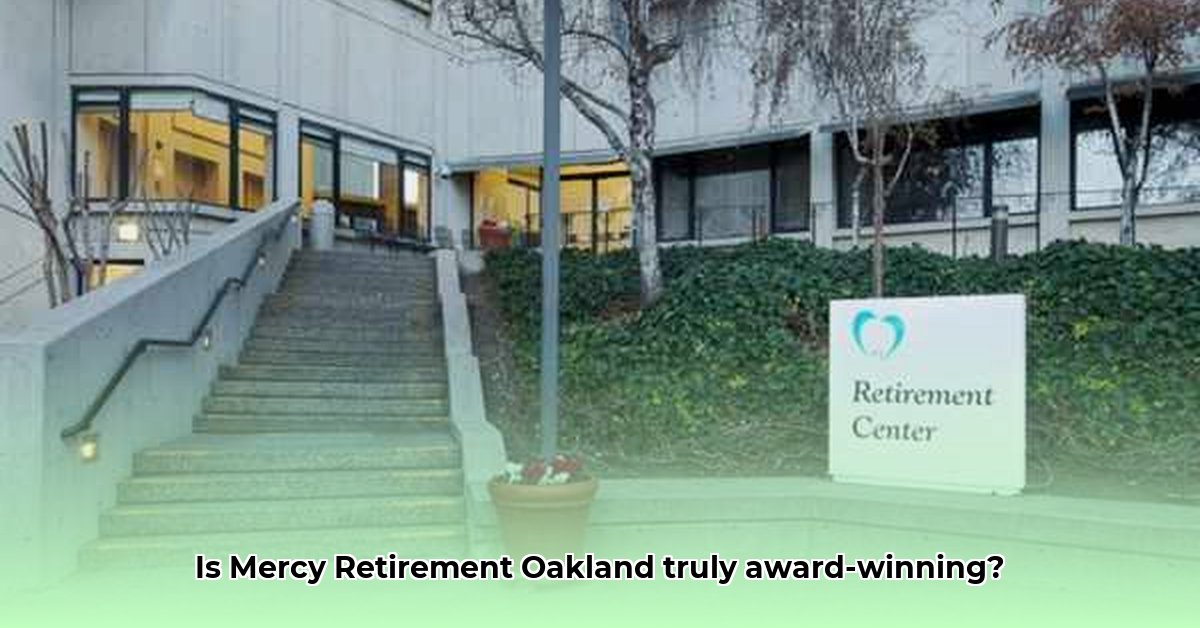
Mercy Retirement Home in Oakland, California, offers a range of senior care services, boasting a rich history dating back to 1872. The facility has received accolades, including the prestigious "Best Memory Care 2024" award, highlighting its commitment to specialized care for residents with memory impairments. However, a comprehensive review necessitates examining both the strengths and weaknesses to provide a balanced perspective for prospective residents and their families.
Strengths: Excellence in Resident Care and Support
Mercy Retirement demonstrates success in several key areas. A remarkable 96.9% of residents maintain a high level of self-care, indicating an empowering and supportive living environment. This independence contributes significantly to residents' overall well-being and quality of life. Furthermore, the facility maintains excellent weekend staffing levels, ensuring consistent care and attention throughout the week. This commitment to staffing is particularly crucial, as it guarantees consistent support and monitoring, particularly for individuals who may require more assistance. The high flu vaccination rate among residents (97.5%) demonstrates a proactive approach to preventative healthcare and showcases a commitment to residents' overall health. Beyond the statistics, Mercy Retirement offers a range of amenities designed to enrich the lives of its residents, including scenic views and engaging activities. Their success in rehabilitation is also noteworthy, with 60.7% of short-term rehabilitation residents successfully returning home—a significant achievement exceeding typical success rates.
Challenges: Areas Requiring Attention and Improvement
While Mercy Retirement exhibits considerable strengths, it is crucial to acknowledge areas needing improvement. The facility's fall rate leading to serious injuries (2.4%) is above the national average, a significant concern for resident safety. Similarly, emergency room visits are higher than desirable, with 17.7% for short-term rehabilitation patients and 2.2 per 1,000 patient days for long-term care residents. Infection rates resulting in hospitalization (8.2%) also necessitate further attention and investigation. Over the past three years, the facility has received fourteen fines totaling $108,608, indicating potential compliance issues that require thorough review and rectification. It is important to note that Mercy Retirement is a relatively small facility with only 59 beds. This smaller size may influence these statistics, potentially causing percentages to appear higher or lower than those in larger facilities—a factor to consider when interpreting the data.
Cost and Transparency: A Critical Factor for Families
A major concern for prospective residents and their families is the lack of readily available cost information. Obtaining a clear price breakdown requires direct contact with the facility, which can create a significant obstacle for those trying to budget effectively and plan for the future. Increased transparency in pricing practices would significantly benefit families making such a crucial financial and personal decision for their loved ones.
Conclusion: A Balanced Assessment and Call for Further Research
Mercy Retirement Home in Oakland presents a complex picture. Its positive attributes, including high self-care rates, excellent weekend staffing, and a commitment to preventative care, are notable strengths. However, areas for improvement exist, particularly regarding fall rates, emergency room visits, infection control, and cost transparency. The facility's smaller size should also be considered when interpreting statistical data. This review aims to provide a comprehensive overview, but prospective residents and their families are urged to conduct their own thorough research—including facility visits, interviews with staff and residents, and a careful review of available data—before making a decision. This assessment represents a snapshot in time; ongoing monitoring and evaluation of the facility's performance are crucial.
Actionable Advice and Recommendations
To ensure an informed decision, prospective residents, families, and the facility itself should take the following actions:
Prospective Residents & Families: Request detailed pricing information; compare fall and emergency room visit rates with other facilities; obtain testimonials from current and former residents and their families; and strongly consider a thorough in-person facility tour.
Mercy Retirement Home Administration: Implement and maintain rigorous fall-prevention and infection-control programs; invest in comprehensive staff training regarding these crucial areas; implement data analytics to closely monitor and improve the quality of care; and proactively address areas for improvement based on data-driven insights.
Regulatory Bodies: Increase the scrutiny of fall and emergency room visit rates; mandate greater transparency in reporting of adverse events; and develop stricter guidelines for reporting adverse events and more rigorously enforce compliance.
This multi-pronged approach—involving thorough due diligence by prospective residents and families, proactive improvements by the facility's administration, and increased regulatory oversight—can contribute to enhancing the quality of care and safety at Mercy Retirement Home.